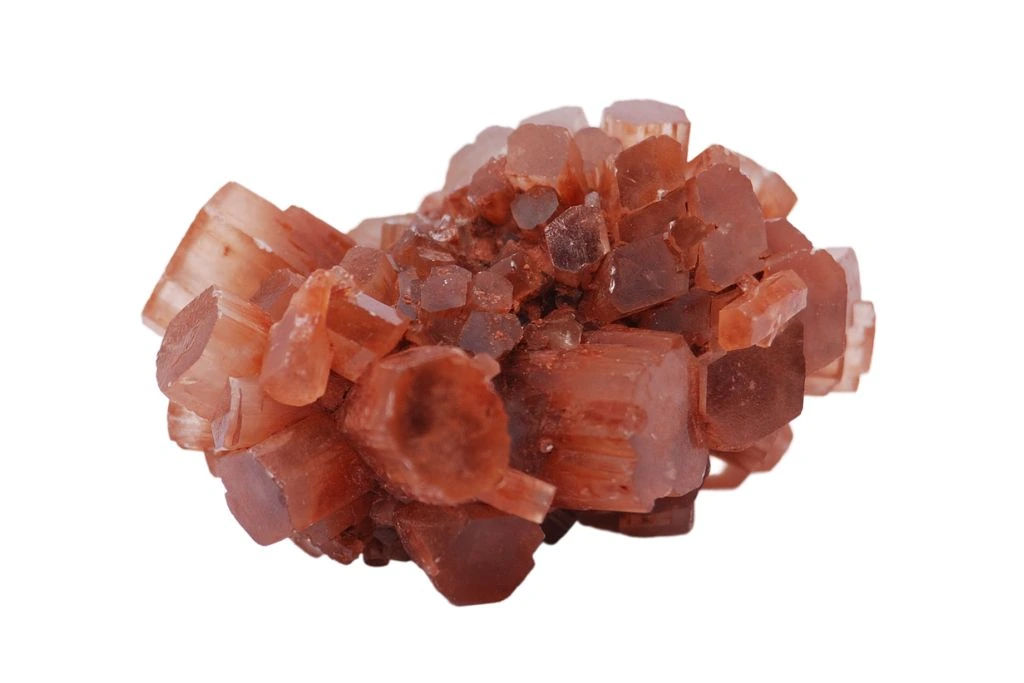Color and Appearance of Aragonite
Aragonite is a captivating mineral that comes in a variety of colors and forms. Its hues range from pure white to pale yellow, and from light brown to rich reddish-brown. Some specimens even display a subtle green tint. One of the most striking features of aragonite is its ability to form in different crystal habits, each with its own unique charm.
Crystal Structure and Habits
The most common crystal habit of aragonite is the prismatic form, characterized by elongated, needle-like crystals. These crystals often cluster together, creating stunning formations that resemble delicate flower bouquets or intricate coral structures. Another notable habit is the pseudohexagonal twinning, where flat, six-sided crystals stack upon each other to form captivating tower-like structures.
Unique Physical Characteristics
Aragonite possesses several distinctive physical properties that set it apart from other minerals. Its lustre ranges from vitreous to resinous, giving it a glass-like or slightly waxy appearance. The mineral also exhibits a conchoidal fracture, similar to that of quartz or glass. Perhaps most intriguing is aragonite’s tendency to fluoresce under ultraviolet light, with some specimens emitting a brilliant blue or green glow.
Notable Features
One of the most remarkable aspects of aragonite is its ability to form in cave environments, creating breathtaking stalactites and stalagmites. These formations often display a banded or fibrous structure, showcasing the mineral’s growth patterns over time. Additionally, aragonite can be found in fossilized shells and corals, preserving the delicate structures of ancient marine life in exquisite detail.
Historical and Cultural Significance of Aragonite
Aragonite has been valued throughout history for its beauty and spiritual properties. Ancient Egyptians used aragonite in jewelry and decorative objects, believing it held protective qualities. In Mexico, the Aztecs and Mayans incorporated aragonite into religious ceremonies and crafted ornate carvings from the stone. These civilizations associated aragonite with divine wisdom and spiritual enlightenment.
Metaphysical Associations
In the realm of crystal healing and metaphysics, aragonite is believed to be a grounding and stabilizing stone. It is said to promote emotional balance, patience, and acceptance. Many practitioners use aragonite to enhance concentration and problem-solving abilities. The stone is also thought to facilitate communication with the Earth and elemental realms, making it popular among those who work with nature spirits.
Common Uses and Benefits
Today, aragonite finds applications in both practical and spiritual contexts. In industry, it is used in water purification systems and as a component in certain types of cement. Jewelry makers prize aragonite for its unique formations and colors, creating stunning pieces that showcase the stone’s natural beauty. In alternative medicine and energy work, aragonite is often used in chakra balancing, particularly for the root chakra. It is believed to help alleviate stress, boost self-confidence, and promote overall well-being.
Modern Applications
In recent years, aragonite has gained popularity in home decor and interior design. Its soothing earth tones and interesting crystal formations make it an attractive choice for decorative objects and statement pieces. Some environmentally conscious individuals use aragonite as a natural air purifier, believing it can help neutralize negative ions and improve indoor air quality. Additionally, aragonite continues to be a favorite among crystal collectors and enthusiasts who appreciate its varied forms and metaphysical properties.

